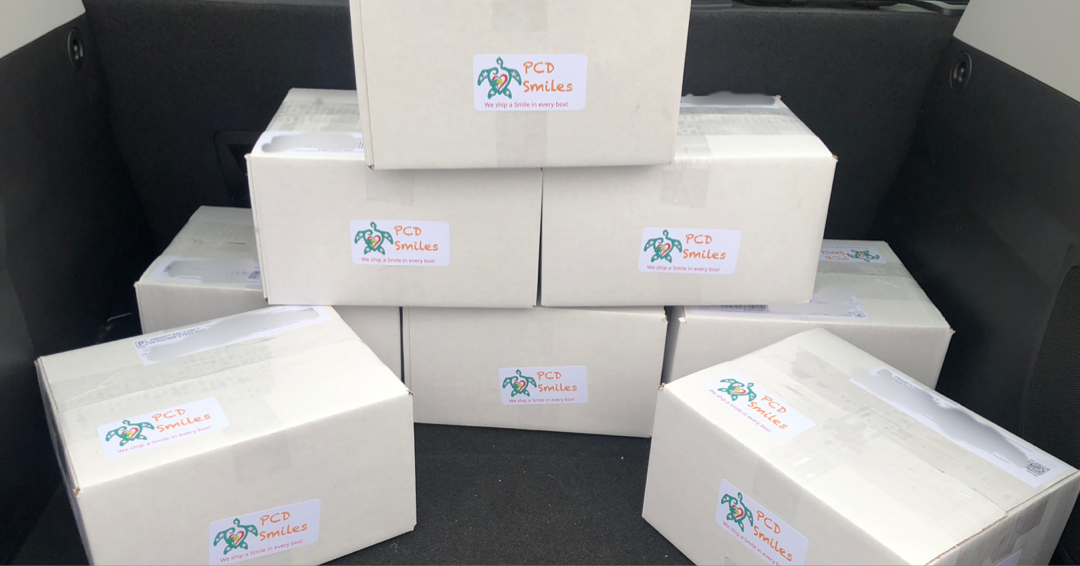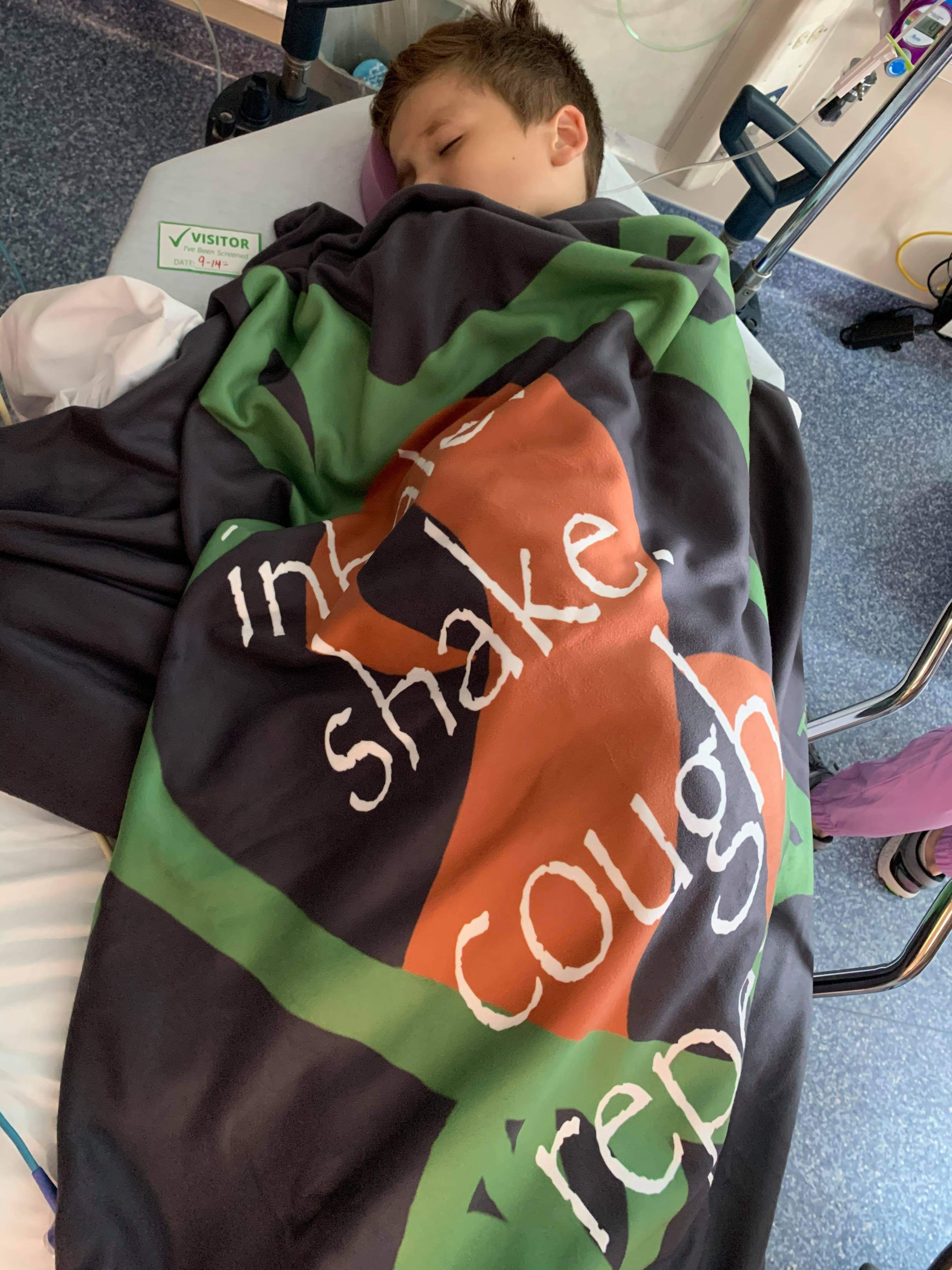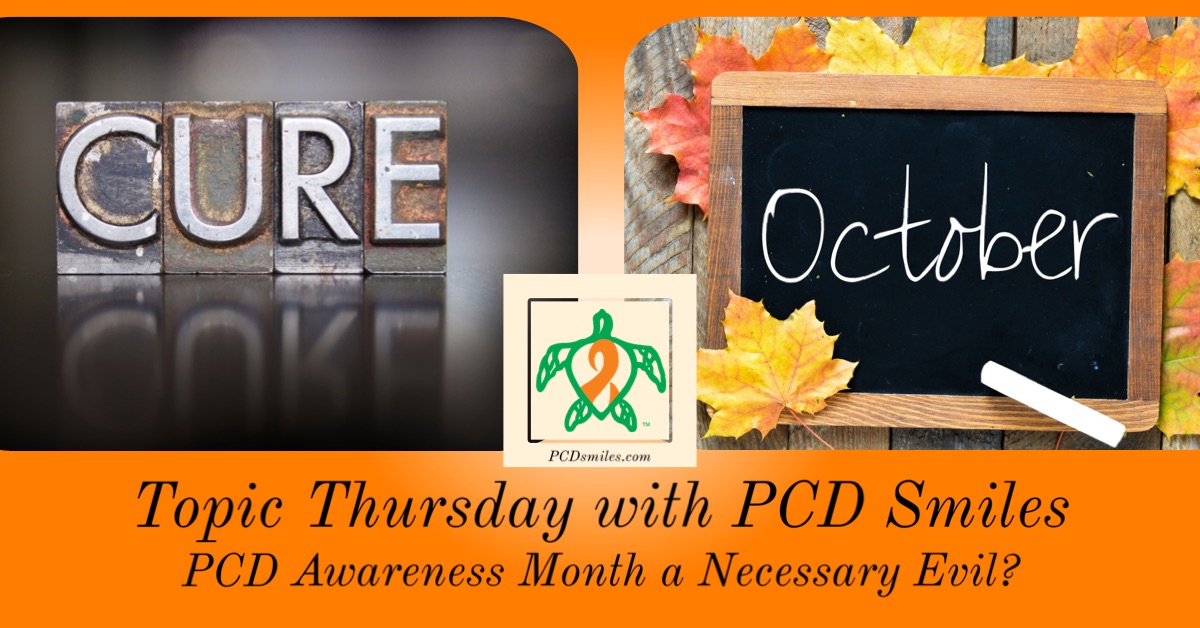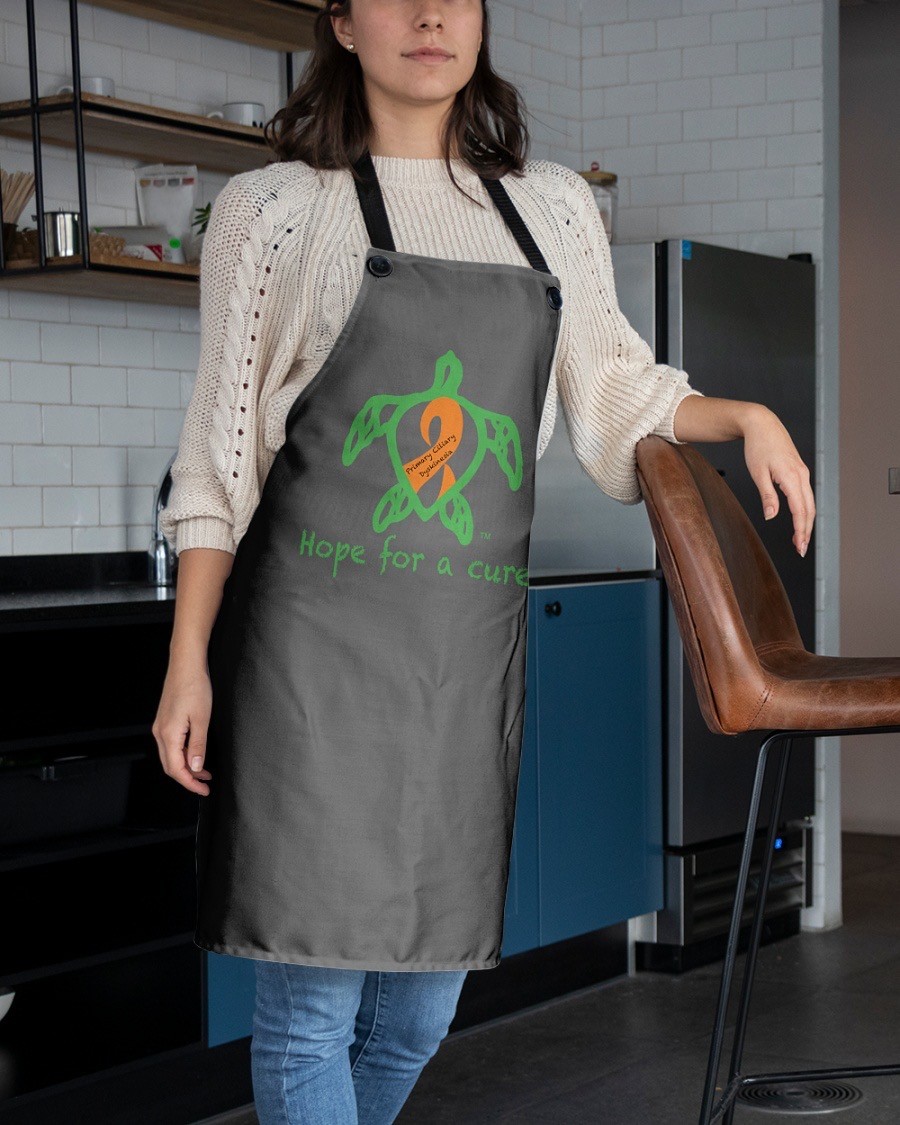The ACTs or Airway Clearance Techniques of PCD (Primary Ciliary Dyskinesia) are used to help transport mucus from the smaller airways to the larger airways. Once in the larger airways the mucus can be coughed or huffed out of the body. PCD patients should do one or more daily ACTs, depending on their care plan. ACTs can be done in conjunction with other treatments like nebulizer treatments; such as bronchodilators, mucolytics, and nebulized antibiotics. However, it is suggested that nebulized antibiotics be done after ACTs are completed. ACTs move mucus to help you breathe better, reduce lung infections, and improve PFTs (Pulmonary Function Tests.) ACTs can be done by almost anyone, the important thing is to actually do the ACTs. So what are some of the common ACTs?
Let’s start with the most basic ACT; coughing. Coughing clears mucus with high speed airflow. However because of the nature of PCD and it’s effects on mucus in a PCD patient sometimes coughing alone doesn’t clear the mucus. And coughing a lot can tire the patient out, make the patient more short of breath, and make the patient feel much worse. Huffing is a type of cough that is not as forceful and not as tiring. Huffing involves taking a breath in and actively exhaling it. Think; huffing onto a mirror to fog or steam it up.
Chest Physical Therapy, also known as Postural Drainage & Percussion or P&D, uses gravity to drain the mucus from the smaller airways to the larger airways, where it can be coughed up. This is done by another person using cupped hands with percussion to the patient’s chest to loosen the mucus from the airways. This is done as the patient lays in various positions that allows gravity to pull the mucus along the airways; where it can be coughed or huffed out.
The Airway Oscillating Device (AOD) or Oscillating Positive Expiratory Pressure (Oscillating PEP) uses resistance to open airways, and vibrations from the device shake the mucus loosening it from the airway walls. The resistance allows air to get behind the mucus and that air then helps to move the mucus from the smaller airways to the larger airways, where it can be coughed or huffed out. Common AODs or Oscillating PEPs are the Flutter™️, the Acapella™️, the Cornet™️, and the Intrapulmonary Percussive Ventilation (IVP)™️. With their lips firmly around the mouthpiece of the device, a patient exhales completely through the device several times, followed by coughing or huffing. This cycle is repeated as prescribed by their care team.
The High Frequency Chest Wall Oscillating Vest or Oscillator uses an inflatable vest attached to a machine that vibrates the vest at high frequencies and inflates the vest to various pressures. This technique works by compressing the chest in and out to create airflow which loosens the mucus from the airway walls. Vibrations then carry the mucus from the smaller airways to the larger airways. And, every five minutes during the treatment, the patient stops the machine for a few seconds to cough or huff out the mucus. Vest settings are determined by your care team, and vary from facility to facility and patient to patient.
Positive Expiratory Device or PEP uses airway resistance to open the airways and get air behind the mucus, loosening it and moving it from the smaller airways to the larger airways; where it can then be coughed or huffed out. A PEP System includes a mask or mouthpiece attached to a resistor machine; like one of the settings on the Metaneb™️. The patient breaths in normally and exhales a little harder against resistance.
Active Cycle of Breathing is designed to get air behind the mucus making it easier to cough up and lowers airway spasms. There are three phases of Active Cycle Breathing. First is Breathing Control, the patient gently inhales through the nose and out the mouth. Second is Chest Expansion Exercise, the patient inhales deeply and holds their breath for three seconds. This gets air in behind the mucus to loosen it and moves it from the smaller airways to into the larger airways. The third and finally phase Forced Expiratory Technique, the patient huff coughs to move the mucus out of the larger airways and out of the body.
Autogenic Drainage (AD) means self drainage. AD uses varied forms of airflow to move mucus from the smaller airways to the larger airways. It also has three phases. First is Dislodging Mucus, the patient takes in sallow breaths to unstick the mucus from the walls of the small airways. Second Collecting Mucus, the patient collects the mucus by holding their breath for three seconds. And the third phase Clearing Mucus, the patient uses hard huff coughs to move the mucus out of the airways. AD takes hard work in the beginning, but most people adapt quickly. However; it’s important to note that AD is NOT recommended for ages eight years old and younger.
Physical Fitness, the last ACT we will discuss today, can be especially important in people with PCD. Even though the patient may have trouble breathing and tire easily, Physical Fitness can help in a number of ways. It can impact the patient’s overall health, provide more energy, improve lung function, and help the patient spend more time with others out and about. Even when hospitalized a patient should get as much movement in as possible to help them maintain their level of fitness. Patients should be active NOT uncomfortable; exercising three to four times a week, doing aerobic exercises that last more than ten minutes is recommended. As is; one to two days a week the patient should include resistance training, such as weightlifting. It is recommended that adult patients get twenty minutes of exercise a day, and children get sixty minutes of exercise a day. Above all a PCD patient should exercise only to the extent that they are physically able to based on their overall health picture, and with the guidance of their care team.
This is just a brief overview of some of the ACTs of PCD. ACTs can vary based on the patient’s disease, the patient’s care center, or even the patient’s country of residence. Although PCD patients’ ACTs can vary, the PCD Experts all agree on one thing; the BEST ACT is the one that the patient will actually do. The experts suggest mixing up ACTs daily, weekly, or monthly depending on the patient’s interests. Keep it fresh, keep it interesting, but most importantly do the ACT that is of interest during the patient’s scheduled time for ACTs.
Be sure to visit us next week for another Topic Thursday!
Join our Facebook group Turtle Talk Café today, click here.
We have several ways that you can donate to PCD Smiles;
- Visit Smile E. Turtle's Amazon Wishlist
- For more information on how you can donate, please visit our "Donation" page to check out our "Do & Don't policies.
- Or sponsor a PCD Smiles cheer package today!
- To shop for your “Official” turtle care ribbon gear today, visit PCD Style or Smile E. Cove
Thank you for your consideration!














